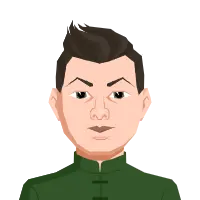Claim Your Offer
Unlock an amazing offer at www.programminghomeworkhelp.com with our latest promotion. Get an incredible 10% off on your all programming assignment, ensuring top-quality assistance at an affordable price. Our team of expert programmers is here to help you, making your academic journey smoother and more cost-effective. Don't miss this chance to improve your skills and save on your studies. Take advantage of our offer now and secure exceptional help for your programming assignments.
We Accept
Sample Assignments on Classes and Top-Down Design Using C++
We offer a selection of sample assignments to showcase the quality and depth of our work. These examples give you a glimpse into the type of detailed, well-organized solutions you can expect when you avail our Classes and Top-down Design using C++ assignment help.
C++
C++
C++
C++
C++
C++
C++
C++
C++
C++
C++
C++
C++
C++
C++
C++
C++
C++
C++
C++
The Ultimate Destination for Affordable Classes and Top-Down Design Assignment Help Using C++
We understand that affordability is a crucial factor for students seeking homework assistance. To ensure our Classes and Top-down Design assignment help using C++ is accessible to all, we customize our rates based on the complexity, length, and urgency of the assignment. This flexible pricing model allows us to provide high-quality help at rates that suit different budgets. Our aim is to offer affordable solutions without compromising on quality, so you can get the support you need at a price you can afford.
| Assignment Type | Price Range |
|---|---|
| Simple C++ Program (short homework) | $30 - $50 |
| Intermediate Assignment (medium complexity) | $50 - $80 |
| Advanced Assignment (high complexity) | $80 - $150 |
| Comprehensive Project (large-scale homework) | $150 - $300 |
| Urgent Assignment (express delivery) | $100 - $200+ |
- Perks and Freebies that Comes with Our Online Help with Classes and Top-Down Design Assignments Using C++
- Understanding Classes and Top-Down Design in C++
- Pay Our Tutors to Do Your Classes and Top-Down Design Homework Using C++ No Matter the Topic
- Who Makes Our Team of Seasoned Classes and Top-Down Design in C++ Assignment Helpers?
- Reliable Classes and Top-Down Design Assignment Writing Help in C++ Blended with Excusive Discounts
Perks and Freebies that Comes with Our Online Help with Classes and Top-Down Design Assignments Using C++
When you seek help with Classes and Top-down Design assignments in C++ from ProgrammingHomeworkHelp.com, you get more than just high-quality programming solutions. We offer a range of perks and freebies designed to ensure you get the best value for your investment. Our services are tailored to support your academic success and enhance your understanding of C++ programming.
- Free Previews of the Solution Before Final Payment
We understand the importance of trust and satisfaction. That's why we provide free previews of the solution before you make the final payment. This ensures that you are fully satisfied with the quality and accuracy of our work before committing financially.
- Free Quote
Transparency is key to our service. We offer a free quote for your assignment, giving you a clear understanding of the costs involved upfront. There are no hidden charges, and you can plan your budget accordingly
- Free Unlimited Revisions
Your satisfaction is our top priority. We offer free unlimited revisions to ensure the solution meets your requirements perfectly. If there are any adjustments needed, our experts will make the necessary changes until you are completely satisfied.
- Free Updates on Assignment Progress
Stay informed with free updates on the progress of your assignment. We keep you in the loop every step of the way, so you always know how your project is coming along. This transparency helps in managing deadlines and reducing any anxiety about the status of your homework.
- Free Explanation of the Solution by the Expert
Understanding the solution is just as important as getting it done. We provide a free explanation of the solution by the expert who worked on your assignment. This helps you grasp the concepts and methodologies used, enhancing your learning experience and preparing you for future assignments.
By choosing our help with Classes and Top-down Design assignments in C++ programming, you not only get top-quality assistance but also enjoy these valuable freebies, all aimed at ensuring your academic success and satisfaction.
Understanding Classes and Top-Down Design in C++
Classes in C++: Classes are the blueprint for creating objects in C++. They encapsulate data for the object and methods to manipulate that data. By defining a class, you can create multiple objects that share the same structure and behavior. This promotes code reuse, organization, and the implementation of object-oriented programming principles such as inheritance, polymorphism, and encapsulation.
Top-Down Design: Top-down design is a programming approach where you start by defining the highest level of the system and then break it down into smaller, more manageable parts. This method helps in organizing and planning a program by focusing on the big picture first, then progressively detailing each component. In the context of C++, top-down design involves defining the main functions and classes before delving into the specifics of their implementation. This approach makes complex systems easier to understand, develop, and maintain.
Combining Classes and Top-Down Design: In C++, using classes along with top-down design can result in a well-structured, modular, and maintainable codebase. By designing the overall structure and flow of the program first, and then defining classes to encapsulate related functionality, developers can manage complexity more effectively and produce more robust software.
Example: Library Management System
In this example, we'll create a simple library management system using classes and a top-down design approach.
Step 1: Top-Down Design
- Define the main functions and classes:
- Library
- Book
- Member
- Detail each component:
- The Library class will manage the collection of books and members.
- The Book class will represent individual books.
- The Member class will represent library members.
Step 2: Implementing the Classes
#include <iostream>
#include <vector>
#include <string>
// Define the Book class
class Book {
public:
Book(const std::string& title, const std::string& author)
: title(title), author(author) {}
void display() const {
std::cout << "Title: " << title << ", Author: " << author << std::endl;
}
private:
std::string title;
std::string author;
};
// Define the Member class
class Member {
public:
Member(const std::string& name)
: name(name) {}
void display() const {
std::cout << "Member Name: " << name << std::endl;
}
private:
std::string name;
};
// Define the Library class
class Library {
public:
void addBook(const Book& book) {
books.push_back(book);
}
void addMember(const Member& member) {
members.push_back(member);
}
void displayBooks() const {
std::cout << "Books in the Library:" << std::endl;
for (const auto& book : books) {
book.display();
}
}
void displayMembers() const {
std::cout << "Members of the Library:" << std::endl;
for (const auto& member : members) {
member.display();
}
}
private:
std::vector<Book> books;
std::vector<Member> members;
};
// Main function to demonstrate the functionality
int main() {
// Create a Library object
Library library;
// Add some books to the library
library.addBook(Book("The Catcher in the Rye", "J.D. Salinger"));
library.addBook(Book("To Kill a Mockingbird", "Harper Lee"));
// Add some members to the library
library.addMember(Member("Alice"));
library.addMember(Member("Bob"));
// Display the books and members in the library
library.displayBooks();
library.displayMembers();
return 0;
} Pay Our Tutors to Do Your Classes and Top-Down Design Homework Using C++ No Matter the Topic
When you decide “I want to pay someone to do my Classes and Top-down Design homework using C++,” you want to ensure that you're getting the best expertise available. Our team excels in a wide range of topics within this domain, delivering high-quality, precise, and well-structured homework solutions. Below are eight key areas where our proficiency shines, guaranteeing your academic success in C++ programming.
- Object-Oriented Programming (OOP) Principles
Our experts are adept at incorporating OOP principles such as encapsulation, inheritance, and polymorphism into your homework. This ensures that your assignments demonstrate a clear understanding of how these concepts are applied in C++ programming.
- Class Design and Implementation
We excel in designing and implementing classes that form the foundation of robust C++ applications. When you pay someone to do your Classes and Top-down Design in C++ homework with us, you receive well-structured and efficient class definitions and implementations.
- Inheritance and Polymorphism
Understanding and applying inheritance and polymorphism can be challenging. Our expertise in these areas guarantees that your homework will accurately reflect these advanced OOP concepts, showcasing their correct usage and benefits in C++ programming.
- Data Abstraction and Encapsulation
Our team ensures that your homework effectively demonstrates data abstraction and encapsulation. These principles are critical for creating maintainable and scalable C++ programs, and we excel in highlighting their importance in your assignments.
- Constructor and Destructor Functions
We provide expert assistance in crafting constructor and destructor functions, ensuring that your C++ classes are well-initialized and properly cleaned up. This is essential for managing resources and memory in your homework assignments.
- Operator Overloading
Our proficiency in operator overloading allows us to enhance your homework by implementing custom behaviors for standard operators. This showcases your ability to extend the functionality of C++ classes effectively.
- Advanced Top-Down Design Techniques
We excel in employing advanced top-down design techniques to break down complex problems into manageable parts. Your homework will benefit from clear, logical design structures that demonstrate a thorough understanding of this approach in C++ programming.
- Error Handling and Debugging
Effective error handling and debugging are crucial for any C++ program. Our expertise ensures that your homework includes robust error handling mechanisms and demonstrates proficient debugging practices, leading to reliable and resilient code.
By choosing us to trust us with your “do my Classes and Top-down Design assignments using C++” request, you gain access to unmatched expertise across these critical topics. Our commitment to excellence in C++ programming guarantees that your assignments will be of the highest quality, helping you achieve academic success.
Who Makes Our Team of Seasoned Classes and Top-Down Design in C++ Assignment Helpers?
At ProgrammingHomeworkHelp.com, our team of Classes and Top-down Design in C++ assignment helpers is composed of highly skilled professionals dedicated to delivering exceptional assistance for your programming needs. We pride ourselves on the diverse backgrounds and extensive experience of our experts, ensuring that you receive top-quality solutions tailored to your academic requirements. Here are the key qualities that make our team stand out:
- Certified C++ Programmers
Our team includes certified C++ programmers who have undergone rigorous training and certification processes. Their in-depth knowledge and expertise in C++ ensure that your assignments are completed with precision and adhere to the highest coding standards.
- Industry Professionals
We have industry professionals who bring real-world experience to the table. These experts have worked on numerous C++ projects in various sectors, providing practical insights and innovative solutions for your Classes and Top-down Design in C++ assignments. Their experience helps bridge the gap between academic concepts and real-world applications.
- Former Professors and Instructors
Our team also features former professors and instructors who have taught C++ programming at renowned institutions. Their teaching experience equips them with a deep understanding of the curriculum and the ability to explain complex concepts clearly. They ensure that your assignments not only meet academic standards but also enhance your learning experience.
- Dedicated and Passionate Tutors
Each member of our team is dedicated and passionate about programming. They are committed to helping you succeed and are always ready to go the extra mile to ensure your satisfaction. Their enthusiasm for C++ and teaching translates into high-quality, engaging assignments that foster a deeper understanding of the subject.
- Detail-Oriented Problem Solvers
Our assignment helpers are detail-oriented problem solvers who excel at breaking down complex problems into manageable tasks. Their meticulous approach ensures that every aspect of your assignment is thoroughly addressed, resulting in comprehensive and accurate solutions.
- Effective Communicators
Effective communication is key to successful collaboration, and our experts excel in this area. They keep you informed throughout the assignment process, providing regular updates and clarifications as needed. Their ability to explain solutions and concepts clearly ensures that you fully understand the material.
By leveraging the expertise of our certified C++ programmers, industry professionals, former professors, and dedicated tutors, we provide unparalleled support for your Classes and Top-down Design in C++ assignments. Trust our team to deliver the best solutions that not only meet your academic requirements but also enhance your understanding and appreciation of C++ programming.
Reliable Classes and Top-Down Design Assignment Writing Help in C++ Blended with Excusive Discounts
ProgrammingHomeworkHelp.com understands the financial constraints that students often face, which is why we offer a range of exclusive discounts to make our Classes and Top-down Design assignment writing help in C++ more affordable. By availing these discounts, you not only get top-notch programming help but also save significantly on your orders. Here are the various types of discounts we offer:
- Refer a Friend and Get a 50% Discount on Your Next Homework
Share the benefits of our exceptional service with your friends and enjoy a hefty reward! When you refer a friend to our Classes and Top-down Design assignment help in C++, you receive a 50% discount on your next homework. It's our way of saying thank you for spreading the word and helping more students succeed.
- 20% Discount on Your Second Order
We value your loyalty and want to make sure you feel appreciated. When you place your second order with us, you automatically receive a 20% discount. This is a small token of our gratitude for choosing our services again for your programming homework needs.
- Bulk Orders Discount
If you have multiple assignments or a large project, our bulk orders discount is perfect for you. The more you order, the more you save! This discount is designed to make it easier and more affordable for you to get comprehensive assistance with extensive or multiple Classes and Top-down Design assignments in C++.
- Seasonal Discounts
Keep an eye out for our seasonal discounts, which are offered during special times of the year such as holidays, the beginning of a new semester, or exam periods. These discounts provide additional savings opportunities, ensuring you get the help you need at the best possible price during critical times.
A Treasure Trove of Insightful Classes and Top-Down Design Using C++ Blogs
Stay updated with the latest trends and insights in C++ programming by exploring our blog. Our articles cover a wide range of topics, from beginner tips to advanced techniques in Classes and Top-down Design. We provide valuable resources that can help you understand key concepts and improve your programming skills. Whether you're looking for tutorials, industry news, or expert advice, our blog is a treasure trove of information. Bookmark our blog and check back regularly for new content that will aid your academic journey.
Read What Our Esteemed Customers are Saying About Our Services
Our commitment to excellence is reflected in the positive feedback we receive from students who have availed our services. Clients appreciate the accuracy, timeliness, and clarity of the solutions we provide for their Classes and Top-down Design in C++ assignments. Our transparent communication and willingness to go the extra mile have earned us a reputation for reliability and quality. Students often highlight our ability to simplify complex concepts and make learning more manageable. Your satisfaction is our top priority, and we continually strive to exceed your expectations.
Meet Our 80+ Brilliant Classes and Top-Down Design Using C++ Assignment Experts
Our team of Classes and Top-down Design using C++ assignment helpers is composed of certified professionals with extensive experience in the field. They include certified C++ programmers, industry professionals, and former professors who bring a wealth of knowledge to each assignment. Our experts are dedicated to providing personalized assistance and ensuring that every solution is meticulously crafted to meet your academic needs.

Mark Grimmer
PhD in Programming
🇺🇸 United States
Mark Grimmer, a software engineer with 10+ years in C++ development, specializes in data structures and algorithm design.

George Paden
Masters in Computer Science
🇺🇸 United States
George Paden holds a master's degree in computer science from the University of California, Irvine. With extensive experience in software development and data structures, he specializes in advanced programming techniques and dynamic memory management.

Alexander Gough
PhD in Programming
🇺🇸 United States
Alexander Gough is a seasoned C++ programmer with over a decade of experience in developing advanced algorithms and data structures. Specializing in recursive problem-solving and binary search trees, Alexander excels in providing tailored solutions for complex programming assignments. His expertise ensures clear, efficient code and insightful guidance, making him a top choice for C++ assignment help.

Ann Leff
PhD in Programming
🇺🇸 United States
Ann Leff is an experienced software engineer with a strong background in algorithm design and programming languages. With over a decade of expertise in developing efficient solutions, she specializes in expression parsing, data structures, and optimizing computational processes for various applications.

Neven Bell
Masters in Programming
🇺🇸 United States
Neven Bell is an experienced C++ developer with a strong background in data structures and algorithm design. He specializes in text processing, efficient data storage, and software optimization. With over 10 years of industry experience, Bell has a proven track record of solving complex programming challenges and helping students excel in their C++ assignments.

Debra Cortez
Masters in Programming
🇺🇸 United States
Debra Cortez is a seasoned software developer with over eight years of experience in C++ programming. Passionate about combining theoretical knowledge with practical applications, she enjoys creating engaging simulations and enhancing coding skills through innovative projects in computer science.

Matthew Newcomb
Masters in Computer Science
🇺🇸 United States
Matthew Newcomb is a seasoned C++ Assignment Expert with a master's degree in computer science from Dokata University. With extensive experience in modern C++, object-oriented programming, and data structures, Alex excels in providing tailored support for assignments and tutoring students to master C++ concepts effectively.
Dr. Hayden Buckley
Ph.D. in Computer Science
🇨🇦 Canada
Dr. Hayden Buckley, with a Ph.D. from Duke University, has 8 years of experience in the field of Computer Science. Having completed over 700 Active Template Library assignments, Dr. Buckley is renowned for his expertise and dedication. His extensive experience and exceptional problem-solving skills make him an invaluable resource for students seeking high-quality ATL assignment help. Trust Dr. Buckley to provide comprehensive support and deliver outstanding results.
Dr. Morgan Griffin
Ph.D. in Computer Science
🇺🇸 United States
Dr. Morgan Griffin, a Ph.D. graduate from Technische Universität Wien, brings 7 years of experience to our Active Template Library Assignment Help service. Having completed over 600 ATL assignments, Dr. Griffin combines advanced technical skills with a deep understanding of assignment complexities. Students can rely on Dr. Griffin for thorough and insightful assistance, aimed at achieving superior academic results.
Dr. Evan Cartwright
Ph.D. in Computer Science
🇦🇺 Australia
Dr. Evan Cartwright earned his Ph.D. in Computer Science from The University of Warwick. With 6 years of professional experience, he has completed more than 400 Active Template Library assignments. Dr. Cartwright’s extensive knowledge and hands-on approach provide students with exceptional guidance and innovative solutions. His dedication to academic excellence ensures that every assignment is handled with the utmost care and expertise.
Dr. Hollie Bennett
Ph.D. in Computer Science
🇺🇸 United States
Dr. Hollie Bennett holds a Ph.D. in Computer Science from City University of Hong Kong. With 5 years of experience in the field, Dr. Bennett has completed over 300 Active Template Library assignments. Her deep expertise in ATL and commitment to delivering high-quality solutions make her a valuable asset to our team. Students benefit from her precise and reliable assistance, ensuring top-notch support for all their ATL assignment needs.
.webp)
Bert Rodriguez
Masters in C++
🇦🇺 Australia
Bert Rodriguez is an experienced C++ assignment helper with over 10 years of expertise. He holds a Master's degree from York University in Canada, specializing in Software Engineering.

James Patel
Masters in C++
🇦🇺 Australia
James Patel is an experienced C++ assignment helper with over 10 years of expertise. He holds a Master's degree from York University in Canada, specializing in Software Engineering.

Christopher Hansen
Ph.D. in C++
🇨🇦 Canada
Christopher Hansen is a seasoned C++ expert with 10+ years of experience. Specializing in tutoring and assignment help, he excels in teaching C++ programming, data structures, and algorithms. Christopher's personalized guidance and comprehensive solutions empower students to master complex concepts and achieve academic success in their programming coursework.

Rebecca Thompson
Masters in Programming
🇦🇺 Australia
Rebecca Thompson is a seasoned expert in C++ assignment help with over 10 years of experience. She holds a Master's degree from the University of Singapore, specializing in Computer Science and Software Engineering.

Matthew Pate
Masters in Programming
🇬🇧 United Kingdom
Matthew Patel is a seasoned C++ assignment help expert with over 12 years of experience. He holds a Master's degree from the University of Technology Sydney, Australia.

Alex Smith
Ph.D. in C++
🇬🇧 United Kingdom
Meet Alex, a seasoned C++ virtuoso with a passion for elegant code design and a knack for teaching OOP principles.
.webp)
Dr. Christina Tarnowski
Ph.D. in Programming
🇦🇺 Australia
Hello! I'm Dr. Christina Tarnowski, your dedicated C++ Assignment Expert at ProgrammingHomeworkHelp.com. With extensive experience in C++ programming, I specialize in delivering customized solutions, clear explanations, and timely assistance to ensure academic success.

Aaliyah Armstrong
Master's in Computer Engineering
🇨🇦 Canada
Aaliyah Armstrong, with a Master's degree in Computer Engineering from the University of Toronto, has handled over 600 C++ template assignments. Her strong foundation in programming principles and innovative approach to assignments make her stand out. Aaliyah is adept at providing customized solutions that cater to specific academic requirements, ensuring that students not only complete their assignments but also understand the underlying concepts.

Callum Chambers
Master's in Software Engineering
🇦🇺 Australia
Callum Chambers earned his Master's degree in Software Engineering from the University of Sydney. He has successfully completed more than 700 assignments, focusing on the practical applications of C++ templates. Chambers's expertise lies in creating efficient, well-documented code that students can learn from and use as a reference. His approach to problem-solving and clear communication style make him an invaluable resource for students.
Related Topics
Frequently Asked Questions
Have questions about our Classes and Top-down Design in C++ assignment help? Our FAQ section is here to provide you with answers to common queries. From pricing and deadlines to revision policies and service guarantees, we've covered all the essential information you need. If you don't find the answer you're looking for, our live chat support is always available to assist you.









